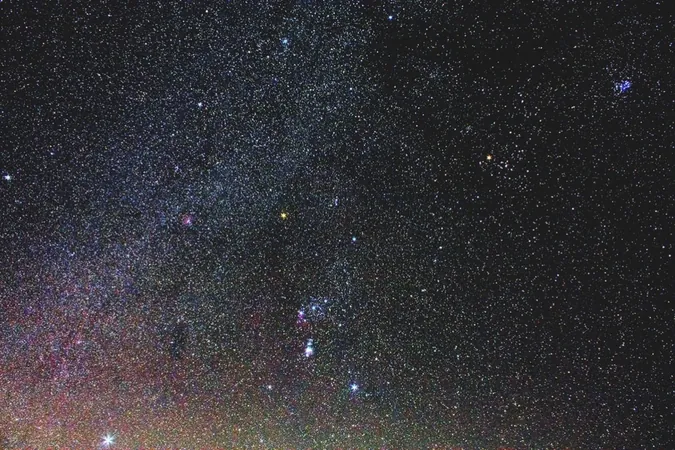
Look Up! Stunning Planets and Constellations Await You in the Kootenay Winter Sky
2025-01-10
Author: Sophie
Explore the Kootenay Winter Sky
As the frosty Canadian winter sets in, it's easy to stay cooped up indoors. But don’t let the biting cold keep you from venturing outside — the winter sky is a treasure trove of astronomical wonders just waiting to be explored!
Orion: The Hunter and Its Bright Stars
Among the stars, Orion the Hunter stands out as the most recognizable constellation. With its three belt stars—Alnitak, Alnilam, and Mintaka—aligned like a cosmic arrow on the celestial equator, both the Northern and Southern Hemispheres can revel in this splendid sight. But that's not all! Orion also boasts an impressive ensemble of bright stars, including the mesmerizing shine of the Orion Nebula, a stellar nursery located about 1,500 light-years away, where countless new stars are being birthed.
A Playground of Bright Constellations
But wait! There’s more to see. As the early sunset invites you to gaze at the skies post-dinner, you'll discover an array of bright constellations, including Auriga, Gemini, Canis Minor, and Major, alongside the robust Taurus. The night becomes a celestial playground filled with at least a dozen bright points of light.
Dazzling Planets Await
For planet enthusiasts, the winter sky features dazzling planets that are simply hard to miss. First up, we have the largest planet in our solar system, Jupiter, positioned high in Taurus—a staggering distance of about 632 million kilometers away! Underneath it, the fiery Aldebaran star twinkles brightly, often referred to as the “angry eye of the bull,” forming part of the Hyades star cluster.
The Pleiades and Mythical Tales
And let's not forget the Pleiades, also known as the "Seven Sisters." This star cluster is a must-see, especially through binoculars. Legend has it that they represent the heart of the Bull in mythological tales.
Spotting Mars and Upcoming Events
Then, moving eastward to the constellation Gemini, you can spot the famous twin stars, Castor and Pollux. Below them, Mars, the red planet, puts on a spectacular show. On January 16, Mars will be especially close to Earth, permitting keen sky watchers to see surface features through a telescope — an event that occurs every 26 months.
Mark Your Calendars!
Mark your calendars for January 13 when Mars will undergo an occultation with the moon, which means it may vanish from sight for about an hour depending on your location.
Witness Venus and Saturn
And don’t overlook Venus, dipping into the lower western sky at around 8:30 p.m. local time, showcased by its brilliant brilliance. Just above it, Saturn—the dazzling jewel of the night—is also visible, boasting a warming yellow hue and residing approximately 83 light-minutes away. Circle January 18, when Venus and Saturn will appear side by side in a captivating conjunction.
Embrace the Night Sky
With today’s astronomy apps, identifying these celestial bodies has never been easier. Whether you're a seasoned astronomer or a curious novice, the night sky is a canvas of wonder that beckons to be admired year-round.
Don’t Miss the Show!
Don't miss out on this phenomenal winter sky show! Get your blankets, grab a thermos, and prepare to be awestruck under the shimmering blanket of stars. Clear skies await!



 Brasil (PT)
Brasil (PT)
 Canada (EN)
Canada (EN)
 Chile (ES)
Chile (ES)
 Česko (CS)
Česko (CS)
 대한민국 (KO)
대한민국 (KO)
 España (ES)
España (ES)
 France (FR)
France (FR)
 Hong Kong (EN)
Hong Kong (EN)
 Italia (IT)
Italia (IT)
 日本 (JA)
日本 (JA)
 Magyarország (HU)
Magyarország (HU)
 Norge (NO)
Norge (NO)
 Polska (PL)
Polska (PL)
 Schweiz (DE)
Schweiz (DE)
 Singapore (EN)
Singapore (EN)
 Sverige (SV)
Sverige (SV)
 Suomi (FI)
Suomi (FI)
 Türkiye (TR)
Türkiye (TR)
 الإمارات العربية المتحدة (AR)
الإمارات العربية المتحدة (AR)